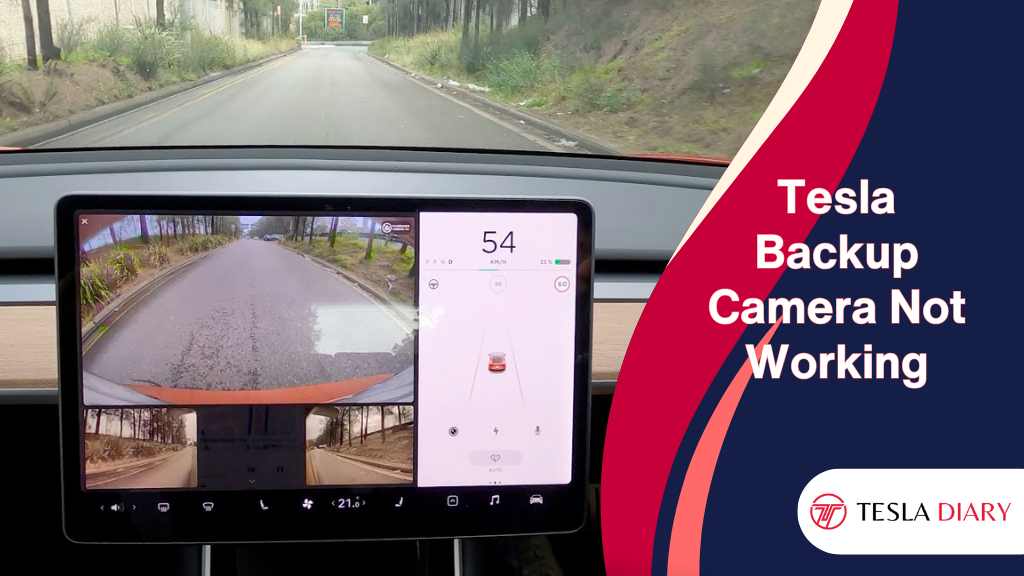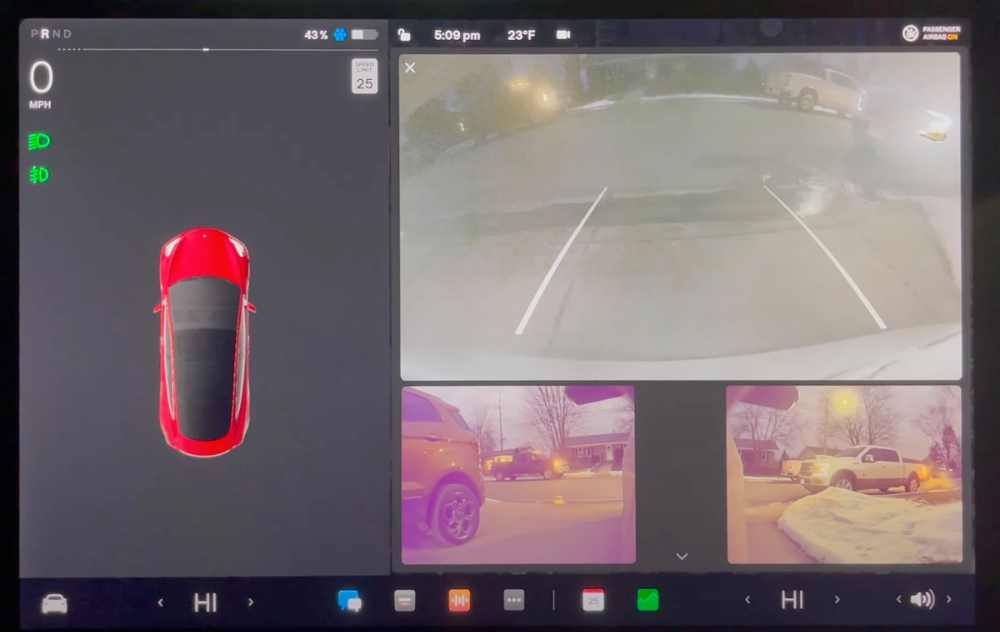The backup camera in a Tesla vehicle is designed to provide drivers with a clear view of the area behind their car while in reverse.
This feature is essential for parking, avoiding obstacles, and ensuring overall safety. When the backup camera stops working, it can be frustrating and potentially dangerous.
But fear not; most of these issues can be addressed without the need for extensive repairs.
In this article, we will explore common reasons why your Tesla backup camera may not be working and provide solutions to resolve these problems.

Reasons for Tesla Backup Camera Issues
Before we dive into the solutions, let’s first identify some common reasons why your Tesla backup camera might not be functioning correctly.
1. Dirt and Debris on the Camera Lens
One of the most common causes of backup camera problems is a dirty or obstructed camera lens.
Dust, dirt, and debris can accumulate on the lens over time, leading to a hazy or distorted image.
2. Electrical or Wiring Problems
Issues with the electrical connections or wiring that power the backup camera can result in a loss of functionality.
This can be caused by wear and tear, loose connections, or electrical faults.
3. Software Glitches
Tesla vehicles rely heavily on software to operate their various features, including the backup camera. Software glitches or bugs can sometimes cause the camera to malfunction.
4. Physical Damage
Accidents or impacts to the rear of the vehicle can lead to physical damage to the backup camera or its components, rendering it non-functional.
5. Settings or Configuration
Sometimes, the problem may not be with the camera itself but with the settings or configuration in the vehicle’s software. Incorrect settings can prevent the camera from working as intended.

Solutions for Tesla Model X, S, 3, and Y Backup Camera Issues
Now that we’ve identified some of the common reasons for Tesla backup camera issues, let’s explore potential solutions for each of these problems.
These solutions apply to all Tesla models, so whether you have a Model 3 or Model X, you can have it fixed by following these-
1. Cleaning the Camera Lens for Blurry Camera
If your backup camera’s image is blurry, hazy, or unclear, the first thing you should do is clean the camera lens.
Use a soft, lint-free cloth and some lens cleaning solution to gently wipe away any dirt or debris.
Ensure that the lens is clean and free of obstructions. The camera is located above the rear license plate.
If you find that the camera is still blurry after cleaning the lenses, it might be due to a defective lens.
In that case, contact Tesla to get the faulty camera replaced with a new one if you are still under warranty.
If the warranty has lapsed, you still need to replace the camera. With a blurry backup camera, you basically have a blurry vision of the rear side of the car which is a safety risk.
2. Update Software for Camera Freezing Randomly
Camera freeze is caused due to software issues.
Tesla frequently releases software updates to improve vehicle performance and fix bugs. Check if there’s a software update available for your Tesla model.
Sometimes, a simple software update can resolve camera-related glitches. Follow these steps to update your Tesla software:
- Connect your Tesla to Wi-Fi.
- Go to the “Software” menu on the touchscreen display.
- Check for updates and follow the on-screen instructions to install any available updates.
If there is no update or a new update did not fix the issue, try the two-button reset–
- Park the car.
- Press and hold both steering wheel scroll buttons.
- Continue holding until the touchscreen goes off.
- Wait for the system to reboot.
Once the reboot is completed, check if the problem persists or not.
Make sure not to persist with your Tesla camera recording continuously blurry or hazy footage which can cause different issues both on the road and in situations like insurance claims.
3. Check Electrical Connections for Reverse Camera Black Screen
If the camera does not provide any video at all, giving a black screen, you should inspect the electrical connections and wiring.
First, check the power source for the camera. Ensure that the fuse associated with the camera is intact.
The fuse location and the number associated with the fuse of the backup camera are different for different models. The location differs in the same model as well if they were manufactured at different times. So, I recommend finding the location searching with your exact model and year.
For example, the Backup camera fuse in my Model X (Manufactured from Sept 1, 2015 – Dec 31, 2020) is located in the Cabin Fusebox. It’s a 15-amp fuse. ID F209.
If you can’t find the fuse, there might not be any as this can be the case sometimes. I recommend contacting Tesla service for assistance in that case.
If you find the fuse, check if it’s blown. If it is, replace it with a new one with the same Amps rating. If it is not blown, you need to have the camera fixed by the Tesla service center.
4. Inspect for Physical Damage
If the camera lens or any of its components appear physically damaged, you may need to replace the camera or its parts.
The camera lens is a very delicate thing. A simple water drop or a grain of sand can cause irreversible damage to the lens rendering the camera non-functional.
Contact Tesla’s service center or a certified Tesla technician for a thorough inspection and potential replacement.
5. Reset Camera Settings
In some cases, incorrect camera settings or configurations may cause the camera to malfunction. You can reset the settings to their default values by following these steps:
- Navigate to the “Controls” menu on the touchscreen display.
- Select “Service“
- Choose “Factory Reset“
After resetting the settings, test the backup camera to see if it’s functioning properly. Note that, performing a reset will erase all your data. So, backup your information or avoid this procedure.
Some people were asking me to share how to replace the backup camera. I decided not to share that because I have seen people damaging their cars more than before by attempting DIY. Especially when the car is made as complicated as Tesla.
Conclusion
A malfunctioning backup camera in your Tesla can be inconvenient and potentially unsafe.
However, most camera-related issues can be resolved with simple troubleshooting steps, such as cleaning the lens, checking electrical connections, and performing software updates.
If these steps do not solve the problem, it’s essential to consult with a Tesla technician to ensure the safety and functionality of your vehicle.
Regular maintenance and care of your Tesla’s backup camera will help prevent issues and ensure a reliable and clear view when you need it most.

